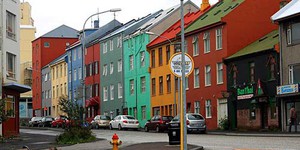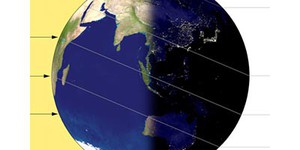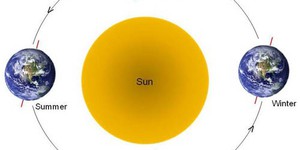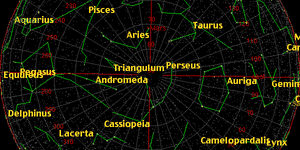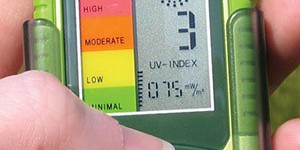Others Like “Weather and Climate in Your Neighborhood” (top 20 results)
|
Did you know that the color of your house could save money? Do this experiment to see which colors regulate temperature best in different environments. Then convince your parents to paint the house and save some money on their energy bill. Maybe they will be so happy they will also increase your allowance!
Read more
Many people are surprised to learn that the season's we experience—winter, spring, summer and fall—have nothing to do with the distance of Earth from the Sun. In this science fair project, you will investigate how the temperature on Earth actually depends on the tilt of Earth's axis of rotation.
Read more
Do you live someplace where you get to experience the full glory of all four seasons? If so, you know well the heady blossoms and dramatic skies of spring; the long, sun-drenched days of summer; the trees shaking in crimson and gold in fall; and the sparkling, brittle snows of winter. But you might not know why we have these seasons, over and over again, in a cycle as predictable as the rising and setting of the Sun. The reasons for the seasons are surprising and have to do with Earth's tilt…
Read more
Many continents contain large mountain ranges that divide the continent into different regions. In the U.S. the Rocky Mountains mark the continental divide. The presence of a large mountain range can have a big effect on seasonal weather patterns. Also, the weather and climate on one side of a mountain range may be very different from weather and climate on the other side of the range. In the case of the Rocky Mountains, the western slope and eastern slope each have very different climates…
Read more
Can you remember what the weather was like last week? Last year? Here's a project that looks at what the weather was like for over a hundred years. You'll use historical climate data to look at moisture conditions in regions across the continental U.S. You'll use a spreadsheet program to calculate the frequency of different moisture conditions for each region and make graphs for comparison. Which part of the country has the most frequent droughts? The most frequent periods of prolonged…
Read more
Are you a snow aficionado? What atmospheric conditions produce light, powdery snow, and what conditions produce heavy, wet snow? This project shows you how to use data from daily balloon soundings of the atmosphere and your own snow measurements to find out.
Read more
Do you like to look up into the night sky? There are so many stars, it can be mind boggling! Some ancient people marked time by the changes in star patterns. We still use changes in constellation patterns to mark astronomical time. Do constellations change more in one hour, one day, one month, or one year?
Read more
How does temperature change as barometric pressure changes? You can make a device to test this using a barometer and a thermometer on your stovetop. You can collect your own weather data from a barometer and thermometer over a period of a week or month. You can also use data from a weather station to plot the relationship between barometric pressure and temperature. Does the pressure change as humidity changes? Measure the pressure in a humid and non-humid environment (like your bathroom…
Read more
It's true that the light from the Sun provides the heat and light we need to survive here on Earth, but it also poses a threat. Ultraviolet (UV) rays in sunlight cause damage that can lead to early skin aging and even skin cancer. In this science fair project, find out when you need the most protection from UV rays by using a personal UV monitor to measure how the level of ultraviolet light changes during different parts of the day.
Read more
As you move up or down in altitude or elevation, the temperature and pressure will change. This is particularly striking if you live near a mountain range. During the summer, at low altitudes you may have temperatures in the 80's or 90's and still be able to see snow on mountain peaks at high altitude. You can test the effect of altitude by comparing temperature data from weather stations at high and low altitudes. You can test the effect of elevation by making your own weather balloon and…
Read more
|
Explore Our Science Videos
Solar Panel Angle for the Junior Solar Sprint
Paper Roller Coasters - Fun STEM Activity!
How can air pressure prevent leaks?


